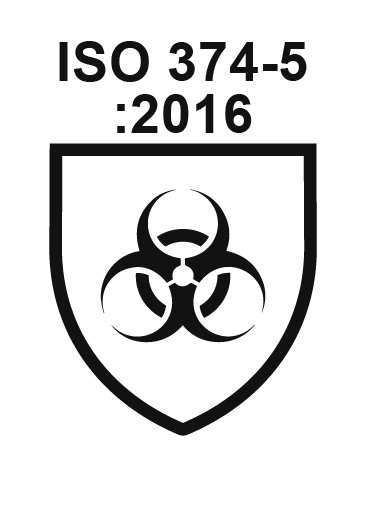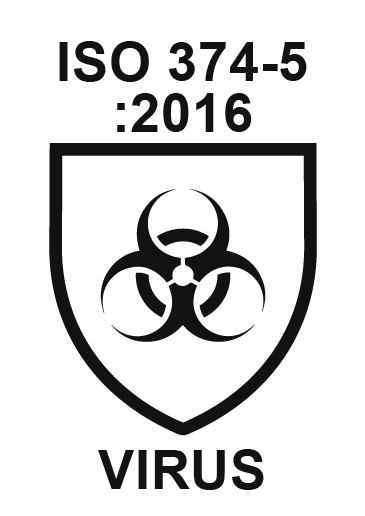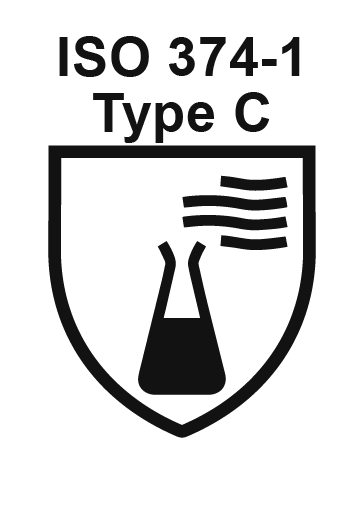Guide For
EN Standard
EN standard for gloves
Keeping our hands safe is crucial for maintaining a productive and fulfilling life since they are vital tools we rely on. While some may overlook it, our hands are susceptible to various hazards like cuts, chemical burns, abrasion, crushing, and exposure to bio-hazards. This is where safety work gloves play a crucial role.
The EN standard for gloves encompasses a set of guidelines established by the European Committee for Standardization (CEN). These guidelines are designed to ensure that gloves used across different industries, including healthcare, construction, manufacturing, and more, meet the necessary standards for quality, safety, and performance.

EN420 – General Requirement
Focusing on the general requirements and testing methods for glove design, construction, comfort, and labeling. It sets the baseline criteria that gloves must meet to ensure their overall quality and safety.

EN388 – Protection against mechanical
Focusing on the testing and classification of protective gloves against mechanical risks. It provides a standardized system for assessing and rating gloves’ performance in protecting against various mechanical hazards.
| From left to right | Mechanical test | Performance rating |
| 1 | Abrasion test | 1 to 4 |
| 2 | Cut resistance (Coupe test) | 1 to 5 |
| 3 | Tear resistance | 1 to 4 |
| 4 | Puncture resistance | 1 to 4 |
| B | Cut resistance (TDM test EN ISO 13997) | A to F |
| P | Impact protection | P (Pass), F(Failed) , X(Does not tested) |

EN374-5 Protection against micro-organisms
Focusing on the testing and certification of protective gloves against chemical and microorganism hazards. It specifically addresses the resistance of gloves to penetration by harmful chemicals and microorganisms.
| Marking | Explanation of marking |
 |
For glove offering protection against bacteria and fungi. |
 |
For gloves protecting against bacteria, fungi and viruses. |
| Marking | Explanation of marking |
 |
For glove offering protection against bacteria and fungi. |
 |
For gloves protecting against bacteria, fungi and viruses. |

EN374-1 Protection against chemical
Focusing on the testing and certification of protective gloves against chemical and microorganism hazards. It specifically addresses the resistance of gloves to penetration by harmful chemicals and microorganisms.
| Type of Gloves | Requirement | Marking |
| Type A | Breakthrough time ≥30 mins (level 2) against at least 6 type of chemicals. |  |
| Type B | Breakthrough time ≥30 mins (level 2) against at least 3 type of chemicals. |  |
| Type C | Breakthrough time ≥10 mins (level 1) against at least 1 type of chemicals. |  |
| Type of Gloves | Requirement | Marking |
| Type A | Breakthrough time ≥30 mins (level 2) against at least 6 type of chemicals. |  |
| Type B | Breakthrough time ≥30 mins (level 2) against at least 3 type of chemicals. |  |
| Type C | Breakthrough time ≥10 mins (level 1) against at least 1 type of chemicals. |  |
List of test chemicals
| Letter | Chemical | CAS | Classification |
| A | Methanol | 67-56-1 | Primary alcohol |
| B | Acetone | 67-64-1 | Ketone |
| C | Acetonitrile | 75-05-8 |
Nitrile compound |
| D | Dichlormethane | 75-09-2 | Chlorinated hydrocarbon |
| E | Carbon disulphide | 75-15-0 | Sulphur containing organic compound |
| F | Toluene | 108-88-3 | Aromatic hydrocarbon |
| G | Diethylamine | 109-89-7 | Amine |
| H | Tetrahydrofuran | 109-99-9 | Heterocyclic ether compound |
| I | Ethylacetate | 141-78-6 | Ester |
| J | n-Heptane | 142-82-5 | Saturated hydrocarbon |
| K | Sodium hydroxide 40% | 1310-73-2 | Inorganic base |
| L | Sulphuric acid 96% | 7664-93-9 |
Inorganic acid, oxidizing |
| M | Nitric acid 65% | 7697-37-2 | Inorganic mineral acid, oxidizing |
| N | Acetic acid 99% | 64-19-7 | Organic acid |
| O | Ammonia 25% | 1336-21-6 | Organic base |
| P | Hydrogen peroxide 30% | 7722-84-1 | Peroxide |
| S | Hydrofluoric acid 40% | 7664-39-3 | Inorganic mineral acid |
| T | Formaldehyde 37% | 50-00-0 | Aldehyde |
Summary
It is important that to understand the each EN standard for gloves. Familiarizing yourself with the EN standard helps you assess and compare different gloves based on their quality, performance, and safety characteristics. You can make informed decisions and provide the best possible glove solutions, enhancing the value and reliability of your products for your customers.
For further information, please visit our blog where each standard has been covered in individual blog posts. Click on the topics you are interested in, such as EN388, EN374-5, and EN374-1, to explore more details on our blog and understand which gloves provide the best solution for your end users.
Don’t Miss Out on The Latest Updates – Subscribe To Our Blog Today!
Stay updated with the latest insights and information about standards by subscribing to our blog. Be the first to access our newest articles and stay informed about industry trends.
Just provide your name and email address in the form below, and select the topics that interest you the most.
Rest assured that we value your privacy and will never share your information with third parties.
You can also unsubscribe from our blog updates at any time with just a few clicks. Don’t miss out on valuable knowledge – subscribe now!
